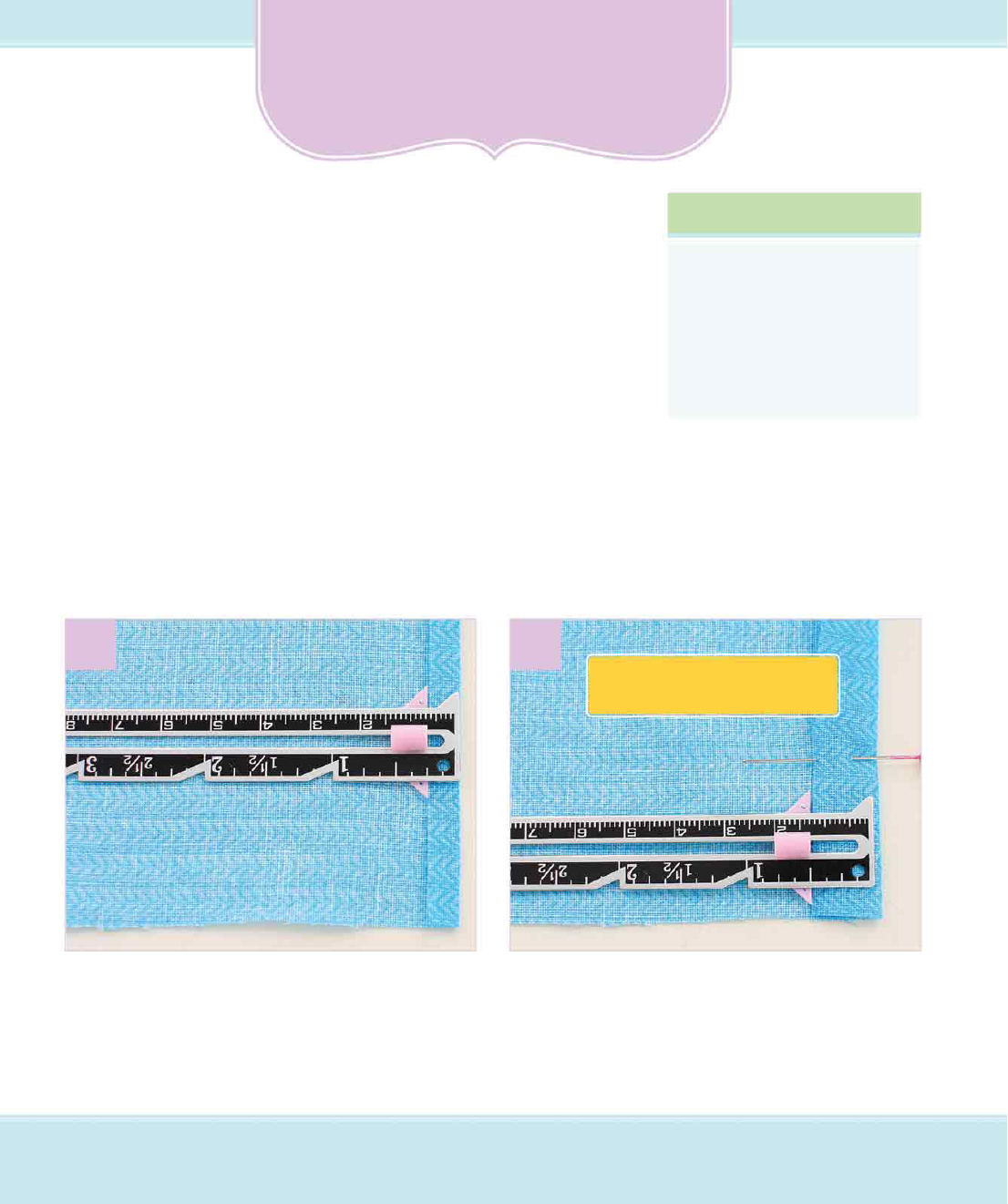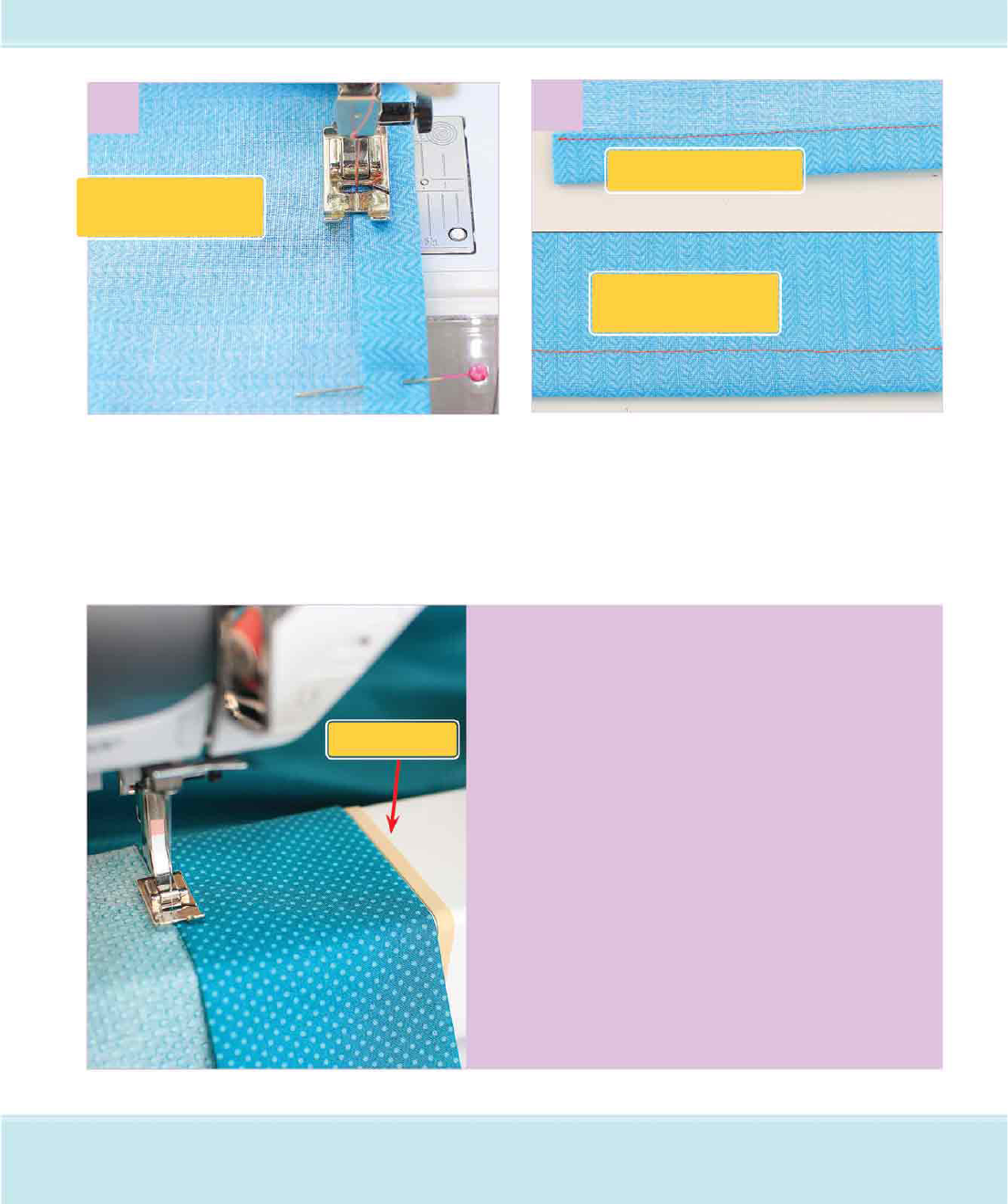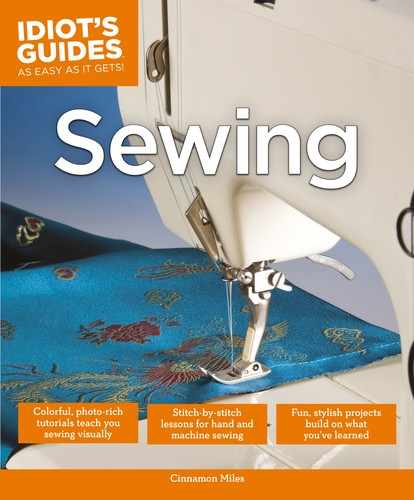
Sewing a Hem
What You Need
• Standard foot attachment
• Seam gauge
• Straight pins
• Iron
Finishing well is important in all areas of life, including
sewing! A crisp, clean hem can add a professional
touch to any item and eliminate frayed edges.
A double-turned hem is probably the easiest type to
learn and do well. This hem is made from two simple
folds and hides the raw edge. You can make this
type of hem at any width. (The following example is
shown at
1
⁄
2
inch [1.25 cm].)
52 Part 2: Start Sewing
Fold and press the edge of your fabric under
1
⁄
4
inch (.6 cm) using an iron. Use the seam gauge
to create an even fold.
Fold under again at the desired hem width.
(This example shows a
1
⁄
2
-inch [1.25 cm] hem.)
Secure the hem with pins.
2
1
The folded edge is tucked under to
the inside of the hem.
ggCH4_Sewing.indd 52 5/23/13 3:36 PM

Sew a straight stitch right along the upper
foldededge.
Sew along the entire length of the hem. Backstitch
at both the beginning and the end.
Tips for Sewing a Perfectly Straight
Larger Hem
Some projects may require a larger hem—for
example, a curtain may have a 3-inch (7.5 cm)
hem—but the standard markings on the throat plate
usually only go up to 1 inch (2.5 cm). Here are a
few tips for creating a larger straight hem:
• Measure out from your needle to the desired
length of the hem.
• Use a rubber band or a piece of easy-to-remove
painter’s tape to mark the line on your machine.
• Line up the edge of your hem with this new
guide as you sew. Be sure to remove the rubber
band or tape immediately so you don’t leave
any residue on your machine!
53Chapter 4: Seams and Hems
3
4
Be sure to remove the
pins as you sew!
Inside view of the hem.
Right side of the hem
(the finished side).
Rubber band
ggCH4_Sewing.indd 53 5/23/13 3:36 PM
..................Content has been hidden....................
You can't read the all page of ebook, please click here login for view all page.
